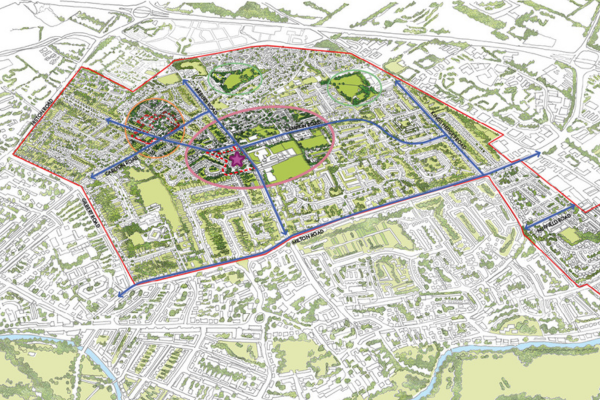Some degree of climate change is inevitable because of past and present carbon emissions. The amount of CO2 in the atmosphere has increased dramatically since the Industrial Revolution increasing the temperature of the Earth by enhancing the greenhouse effect. As we continue burning fossil fuels and other activities, the amount of CO2 will continue to rise, further warming the climate.
If we take no action to reduce greenhouse gas emissions, average global temperatures are likely to increase by between 2.6°C and 4.8°C by the end of the 21st Century (2081-2100) compared to 1986-2005 (Source: Intergovernmental Panel on Climate Change).
In England temperatures are, on average, between 0.5-1°C higher than they were in the 1970s. Rising global temperatures will bring increased temperatures, changes in weather patterns, rising sea levels and increased frequency and intensity of extreme weather across the globe. Extreme weather events already cause damage and disruption and are likely to become more frequent and severe as the climate changes.
Changing our plans and behaviour to respond to the impacts of climate change is known as 'adaptation'. Adapting to climate change means adapting the way we do things - in all areas of our lives - to respond to the changing circumstances. Preparing for climate change today in many instances will reduce the impact of future costs and damages, and enable organisations and individuals to take advantage of potential opportunities.
We have produced a Climate Change Risk and Vulnerability Assessment and Adaptation Plan [PDF, 0.7MB] to assess and address the risks of climate change.
Check the Met Office’s WeatherReady website for advice on preparing for and coping with severe weather.
You can explore local climate projections with the Met Office’s Local Authority Climate Service. It will show you how climate change can affect your neighbourhood or organisation. You can generate a report with information on national and local climate changes. It will also include insights into local weather and climate hazards.
There are many changes you can make now to mitigate the effects of climate change and adapt for the future:
Keep cool in hot weather
- Insulating your home will keep you warm in winter and cooler in summer.
- You could cool your home naturally instead of using air conditioning, which can damage the environment, by increasing ventilation, creating a breeze through your home by opening the windows at the highest and lowest points in the house, or on opposite sides of the house and during very hot weather, opening windows at night to let cool air in; closing windows and curtains or blinds during the day to trap the cool air inside.
- Replacing carpets with solid flooring like stone or ceramic tiles has a cooling effect, and can lessen damage from a flood.
- Fitting blinds, shutters or awnings to provide shade and keep heat out.
- Painting your outside walls and roof a light colour to reflect heat.
Reduce the frequency and impact of flooding
- Install a water butt: As the UK is likely to experience more droughts in summer months, saving water will become even more important. Using less water in the garden will help to make the most of resources, especially during drier months. The average rooftop collects 85,000 litres of water every year and so installing a water butt can divert this from entering the drainage system which may be overwhelmed during a heavy downpour. Visit Get Composting to view their offers on water butts.
- Choose permeable paving for driveways to reduce surface water flooding risks as paving over gardens with hard surfaces such as concrete or block paving contributes to flooding because it takes in much less rainwater than lawns and plants.
- Be prepared for possible flooding by checking the Environment Agency’s flood map and finding out how you can prepare. If your home is at risk, consider ways to keep floodwater out, such as fitting air brick covers or installing a waterproof membrane on the outside walls. Also check the condition of your guttering and drains – can they cope with more rainfall?
Greening your home
Our 'Greening your home' booklet will provide you with the information you need to make your home and lifestyle greener.
- Greening your home [PDF, 2MB]
- Pick up a copy from the Customer Service Centre at Mandela House, 4 Regent Street, Cambridge.
- Chapter 2: Saving water [PDF, 0.2MB]
- Chapter 6: Greening your garden [PDF, 0.5MB]



